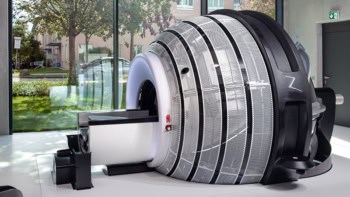
A deep-learning model developed by researchers from the Artificial Intelligence in Medicine (AIM) Program can predict the 10-year risk of death from heart attack or stroke using a single chest X-ray.
Currently, this risk is estimated using the atherosclerotic cardiovascular disease (ASCVD) risk score. This statistical model requires numerous input parameters, including age, sex, race, systolic blood pressure, hypertension treatment, smoking and type 2 diabetes status, and blood tests. Patients with a risk of 7.5% or higher are recommended statin medication. Often, however, these variables aren’t all available in the patient’s electronic record.
To remedy this shortfall, the researchers created a deep-learning model that can estimate the 10-year risk of major adverse cardiovascular events from a routine chest radiograph. At this week’s RSNA 2022, the annual meeting of the Radiological Society of North America, lead author Jakob Weiss presented the team’s work.
“Our deep-learning model offers a potential solution for population-based opportunistic screening of cardiovascular disease risk using existing chest X-ray images,” Weiss explains. “This type of screening could be used to identify individuals who would benefit from statin medication but are currently untreated.”
Weiss and colleagues developed their CXR-CVD risk model using 147,497 chest X-rays from 40,643 participants in the PLCO cancer screening trial. They tested its performance using an independent group of 11,430 outpatients who had a routine chest X-ray at Mass General Brigham and were potentially eligible for statin therapy. Over the median follow-up of 10.3 years, 9.6% of these patients suffered a major adverse cardiac event, with significant association between the model-predicted risk and the observed events.
In the 2401 patients with sufficient data available, the team also compared the prognostic value of the CXR-CVD risk model with the established clinical standard for deciding statin eligibility. In this subset of patients, the model exhibited similar performance to the clinical standard.

Open-source algorithm predicts heart attack risk from chest CT scan
“The beauty of this approach is you only need an X-ray, which is acquired millions of times a day across the world,” Weiss says. “We’ve long recognized that X-rays capture information beyond traditional diagnostic findings, but we haven’t used this data because we haven’t had robust, reliable methods. Advances in AI are making it possible now.”
Weiss notes that that additional research, including a controlled randomized trial, is needed to validate the model, which could ultimately serve as a decision-support tool for physicians.



